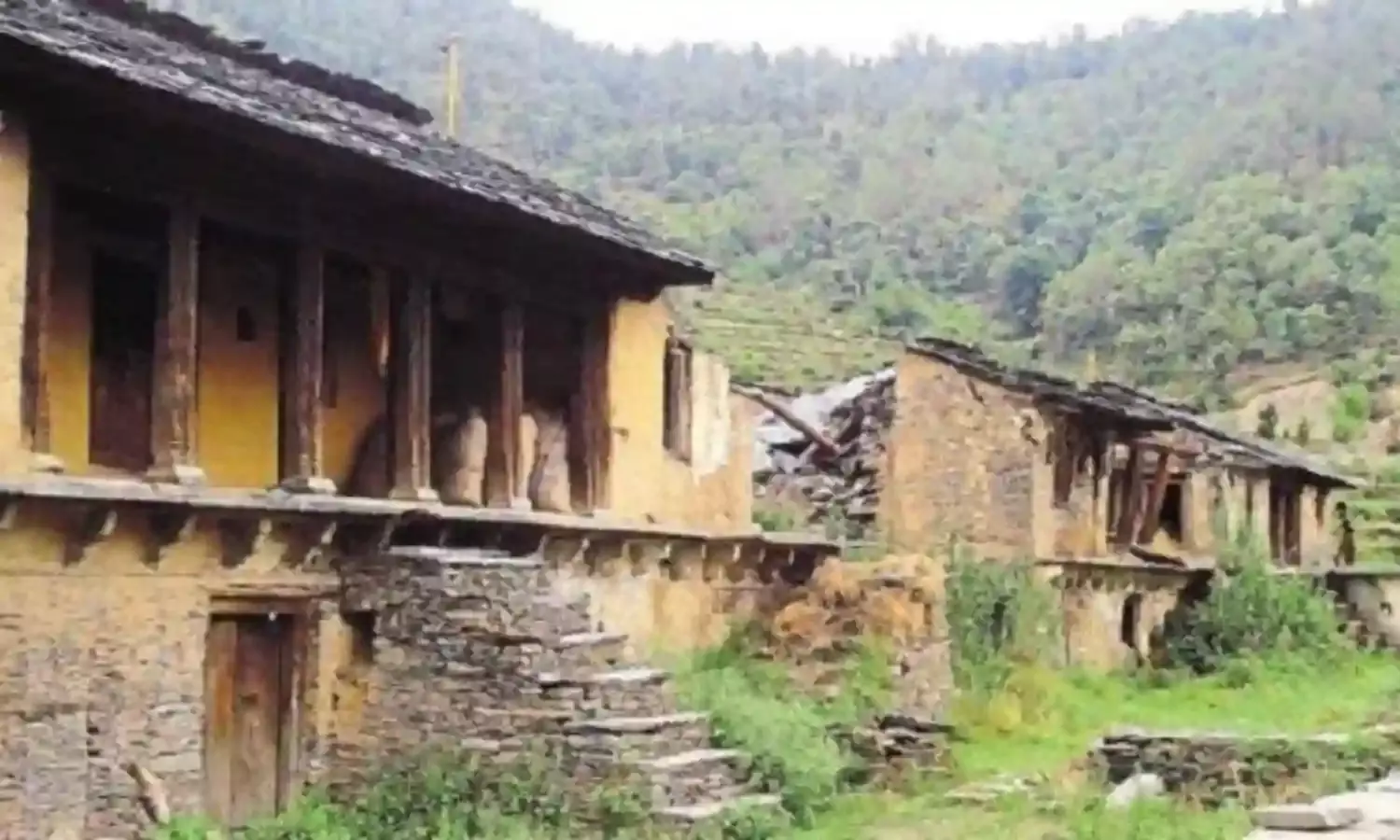Ghost Villages Sprout in Uttarakhand, from Deforestation and Natural Disasters
Locals are reluctant to believe that any effort can improve the situation

Saransh Nautiyal, a young corporate professional from Uttarakhand living in Delhi recalls a night in his ancestral village of Singhali when a natural disaster killed two of his family members including his father.
“The rain kept falling all night. It didn’t stop even for a minute. Lightning and storms were deafening all throughout the night. Early morning next day a villager came calling to save a family the deluge,” he says.
“As everyone gathered, there was a bomb like explosion. Debris flew up and into the air. Pillars came out and swung in the air and then there was a huge surge of water from above carrying people, houses, trees and boulders.”
Having lost three members of the family, the others in Nautiyal’s family decided to migrate, fearing more threats from a natural disaster.
At least 735 villages have been deserted completely in Uttarakhand. In common parlance they are now referred to as bhootani gaon, or ghost villages.
According to a report by the state government’s Migration Commission or Palayan Aayog, in the last ten years 735 villages were completely vacated by their inhabitants, while in another 565 villages the population fell by more than half.
Migration is not unique to Uttarakhand, with its hilly areas not providing enough opportunities to generate income, a number of people joining the armed forces, climate change, natural disasters and man–animal conflicts.
According to disaster management officials over 800 people died in the state between 2010 and 2017 due to events triggered by heavy rainfall. This does not include the 10,000 or more people who died in the June 2013 flash floods that wiped away villages altogether.
Piyush Rautela, head of the state government’s disaster management and mitigation department, stated that while there are social-economic reasons leading to emigration from rural villages, the change in local weather patterns leading to natural disasters cannot be overlooked.
“Migration has been quite historical in Uttarakhand, people have largely migrated for better opportunities, for the lack of infrastructure. But lately, extremely heavy rainfalls that weaken the mountains causing landslides and floods have also played a part in it. We are also aware of the weak zones, and we know, sooner or later, landslides will strike at these places.’’
Man–animal conflict is yet another reason why people are leaving their villages in search of a safer space. With sparser populations and reduced farming activities amid continuing deforestation, wild animals move towards human settlements, says Joy Hukil, who has so far killed 34 man-eaters.
“People are leaving the villages here because of consistent attacks from man-eaters, there is fear among villagers living here of being attacked by a wild animal. Wild animals on their part are moving towards barren farmlands owing to people leaving farming activities. This closeness with human settlements causes them to attack human beings,” he explained.
This conflict is intense: 7,400 animals and 79 people were killed since 2018 according to state forest minister Harak Singh Rawat’s reply to a question in the state assembly last year.
While officials efforts are on to stop people from emigrating, locals are reluctant to believe that any effort can improve the situation in the near future.
Chief Minister Trivender Singh Rawat, addressing the problem of ghost villages had said that the government is planning to aquire land in these villages so entrepreneurs can utilise it for horticulture, growing medicinal plants, or for tourism related activities.
Amidst the havoc and assurances, people in these villages continue to live in fear, and are willing to move out sooner or later.
Amrita Devi, 62, a resident of Singhali believes that so much damage has been caused that people living here have started believing that sooner or later they will be attacked by wild animals or succumb to natural calamity.
“I have seen the village being vacated by families year after year. While our earlier generations would do so in search of better livelihood opportunities, now we are moving out to save our lives. It’s not just about jobs. Even the older folk are migrating elsewhere, sometimes to live with our kids outside.
“We have no option but to move out. I have been thinking to come and live with my son in Delhi too,” Amrita Devi told The Citizen.
Inderesh Maikhuri, a political activist associated with the CPI(MLL) told The Citizen how “migration was a major issue behind the creation of the state. Those who fought for it assumed that with a new state, the underlying issue of migration would be resolved. However, the intensity of migration only magnified after the state came into force.”
“Some factors can be underlined: a lack of resources, education, jobs and health facilities. Irrespective of who came to power in the state, the governments did not pay attention to the hilly areas, confining their welfare measures to people living in the plains. And due to man-made deforestation and climate change, there has been large scale conflict with other animals.”



